FENCE REPAIRS
Fast Fix Fencing. We’ll take care of your broken fence.
Fence repairs are a common necessity for homeowners and property owners who want to maintain their fences’ functionality, aesthetics, and security. Whether it’s a wooden fence, chain-link fence, vinyl fence, or any other type, fences can be subjected to various kinds of damage over time. Common fence repairs include fixing broken or damaged panels, repairing loose or leaning posts, addressing rusted or damaged hardware, and dealing with issues like pest damage or rot. Timely and proper fence repairs are essential to prevent further damage, ensure structural integrity, and prolong the fence’s lifespan. By addressing these repairs promptly and performing regular maintenance, property owners can preserve the value and appearance of their fences while enjoying the benefits they provide.
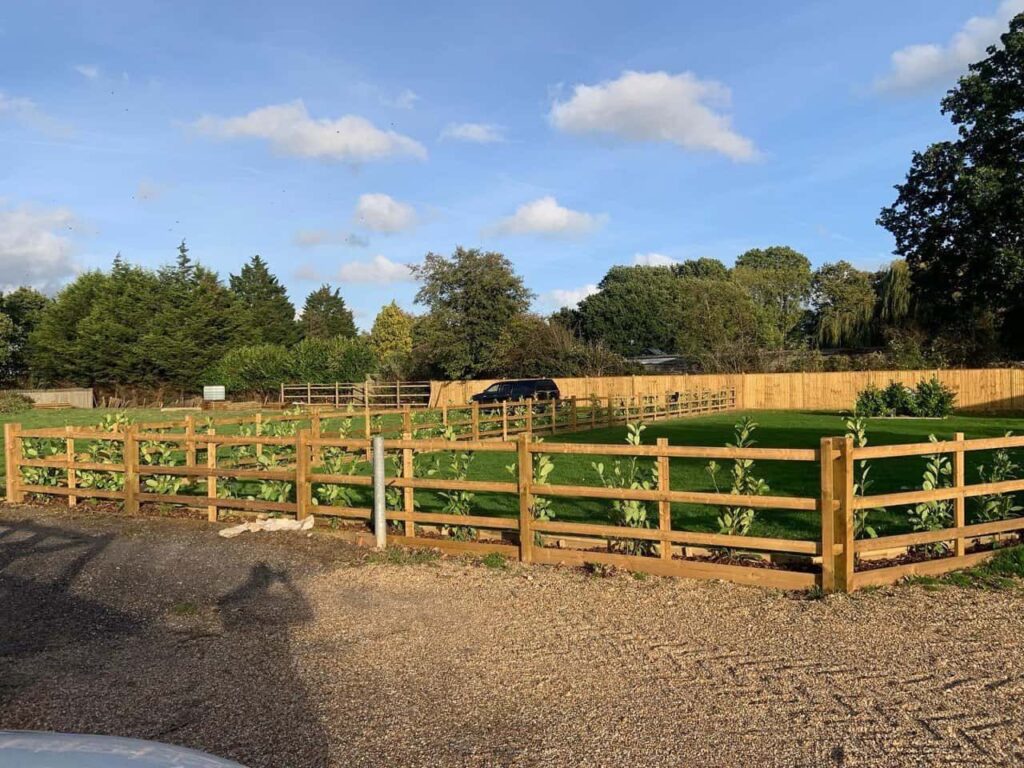
post and rail fence repairs
Post and rail fences are popular for many homeowners and property owners due to their rustic charm and durability. However, like any other type of fence, post and rail fences may require repairs over time due to various factors such as weathering, damage from animals or pests, or wear and tear. Here are some common repairs that can become necessary with post and rail fences.
One of the most common issues with post and rail fences is broken or damaged rails. This can occur due to weather conditions, impact from falling branches, or accidental damage. To repair this, start by removing the damaged rail from the fence. If the rail is split or cracked, it’s best to replace it entirely. Measure the length of the rail and purchase a replacement that matches the existing rails in terms of size and material. Secure the new rail using nails or screws, ensuring it fits snugly between the posts.
Over time, the posts may become loose or start to lean. This can compromise the stability and overall integrity of the fence. To repair this, start by digging around the base of the affected post to expose the soil and any concrete footing beneath it. If the post is loose, adding more soil or gravel around the base and compact it can provide additional support. If the post is leaning significantly, you may need to realign and reinforce it with additional braces or concrete. Use a level to ensure the post is straight before securing it in place.
As with any wooden structure, post and rail fences can suffer from rot or decay over time, especially in areas with high moisture or inadequate ventilation. If you notice signs of rot, such as soft or discoloured wood, it’s essential to address the issue promptly to prevent further damage. Remove the affected fence sections and replace them with new, rot-resistant wood. It’s recommended to use pressure-treated lumber or naturally rot-resistant wood species for long-lasting repairs.
Regular maintenance is key to preventing extensive repairs and prolonging the lifespan of your post and rail fence. Inspect the fence periodically for signs of damage, including loose or damaged rails, loose fasteners, or signs of decay. Clean the fence regularly by removing debris, dirt, and vegetation that may accumulate around the posts and rails. Apply a protective sealant or stain every few years to enhance the fence’s resistance to moisture, UV rays, and other environmental factors.
Post and rail fences are durable and aesthetically pleasing, but they may require occasional repairs to address issues such as broken rails, loose posts, pest damage, or rot. By promptly addressing these repairs and performing regular maintenance, you can ensure that your post and rail fence remains functional and visually appealing for many years to come. At Fast Fix Fencing we are able to take care of all your post and rail repair needs. Please don’t hesitate to contact us anytime to schedule an appointment.
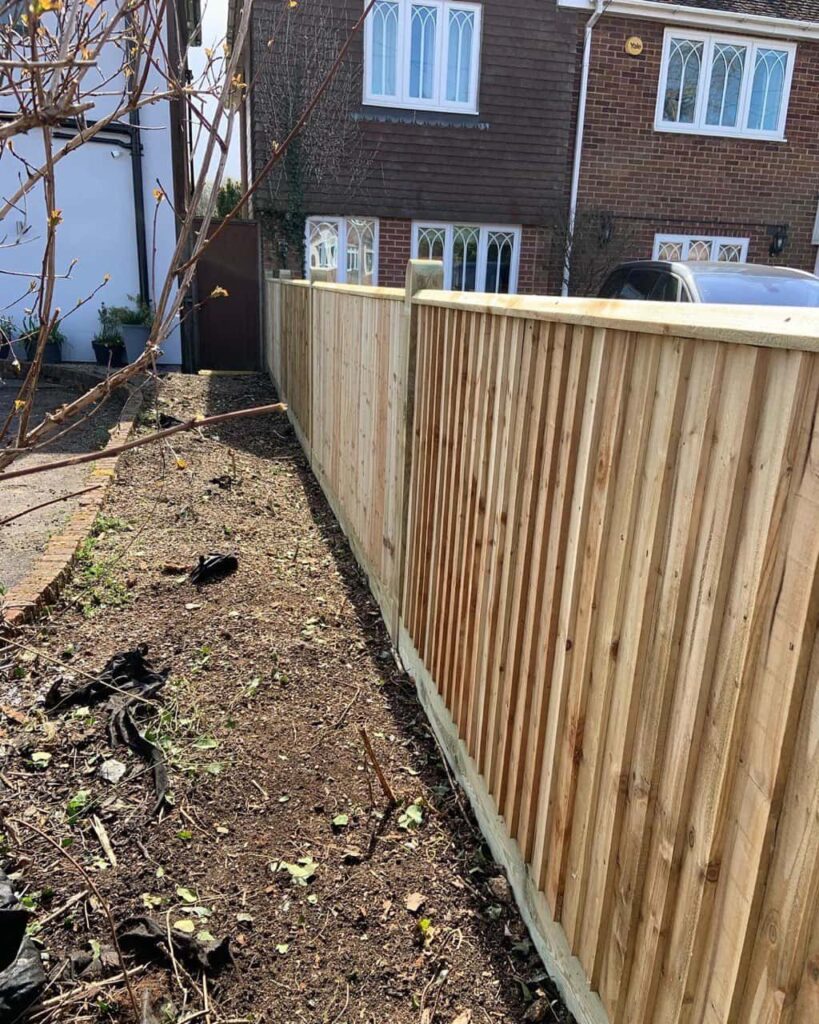
Feather Edge Fence Repairs
Feather edge fences, also known as close board fences, are popular for their durability and privacy. However, these fences may require repairs over time due to weathering, rot, or accidental damage. Here are some common repair methods:
One of the most common issues with feather edge fences is broken or damaged boards. This can occur due to severe weather conditions, impact from fallen branches, or accidental damage. To repair broken or damaged boards, identify the affected section of the fence. Remove any nails or screws that are still attached to the damaged board. Measure and cut a replacement board to match the dimensions of the existing boards. Attach the replacement board securely to the fence’s horizontal rails using nails or screws, ensuring it aligns with the adjacent boards for a seamless appearance.
Wooden feather edge fences are susceptible to rot or decay, especially if they are exposed to moisture or lack proper maintenance. To repair rotting or decaying sections, start by inspecting the affected areas of the fence. If the rot is localised and hasn’t spread extensively, you may be able to remove the damaged section with a chisel or saw. Cut out the rotted wood until you reach a solid and healthy section. Once the damaged wood is removed, measure and cut a replacement board to fit the opening. Attach the new board securely to the horizontal rails using nails or screws. To prevent future rot, consider treating the replacement board with a wood preservative or applying a waterproof sealant to the entire fence.
Over time, individual boards within a feather edge fence may become loose or detached, compromising the fence’s stability and appearance. To fix loose or detached boards, inspect the affected boards and determine the cause. If the boards are loose, you can reinforce them by applying wood glue or epoxy to the joint between the board and the rail. Use clamps or weights to hold the board in place until the glue dries. If the boards are severely damaged or cannot be repaired, it’s best to replace them entirely. Remove the old boards and install new ones, ensuring they are securely attached to the horizontal rails.
Regular maintenance is essential for avoiding extensive feather edge fence repairs. Keep the fence clean by regularly removing debris, dirt, or vegetation that can trap moisture and accelerate decay. Inspect the fence periodically for signs of damage, such as loose or damaged boards. Apply a protective sealant or paint to the fence every few years to enhance its resistance to moisture, UV rays, and other environmental factors. Also, ensure proper drainage around the fence to prevent water from pooling near the boards.
In summary, feather edge fence repairs may involve fixing broken or damaged boards, addressing rot or decay, repairing loose or detached boards, and preventing future damage through regular maintenance. By promptly addressing these repairs and performing routine upkeep, you can extend the lifespan of your feather edge fence, maintain its functionality and appearance, and continue to enjoy the privacy and durability it provides for your property.
Whilst repairs are relatively straightforward, some people prefer to use a professional fencing company to have them undertaken and that is where Fast Fix Fencing can help. Please feel free to contact us anytime to discuss your feather edge fence repair needs.
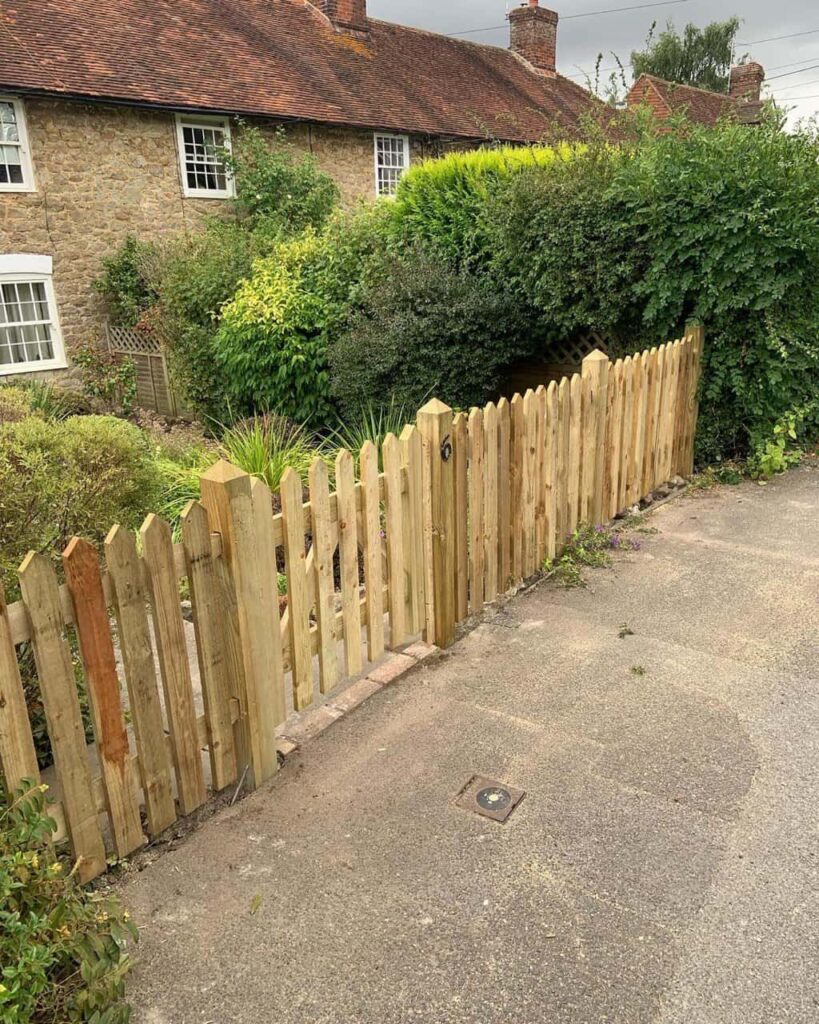
Picket fence repairs
Picket fences are a classic and charming addition to residential properties. They offer both aesthetic appeal and serve as a boundary marker for your garden. However, picket fences may require repairs over time due to weathering, rot, or accidental damage. Here are some methods for repairing a picket fence:
One of the most common issues with picket fences is broken or damaged pickets. This can occur due to strong winds, impact from falling objects, or accidental damage. To repair broken or damaged pickets, start by removing the damaged picket from the fence. If the picket is only partially broken or has a small crack, you can fix it by applying wood glue to the damaged area and clamping it until the glue dries. For more severe damage, it’s best to replace the picket entirely. Measure the dimensions of the existing pickets and purchase a replacement picket that matches in terms of size and style. Install the new picket by attaching it securely to the fence rails using nails or screws.
Wooden picket fences are susceptible to rot or decay, especially if they are exposed to moisture or lack proper maintenance. To repair rotting or decaying pickets, start by inspecting the affected areas of the fence. If the rot is localised and hasn’t spread extensively, you may be able to remove the damaged section with a chisel or saw. Cut out the rotted wood until you reach a solid and healthy section. Once the damaged wood is removed, measure and cut a replacement picket to fit the opening. Attach the new picket securely to the fence rails using nails or screws. To prevent future rot, consider treating the replacement picket with a wood preservative or applying a waterproof sealant to the entire fence.
Over time, pickets may become loose or wobbly, compromising the integrity and appearance of the fence. To fix loose or unstable pickets, start by inspecting the affected pickets and determining the cause. If the pickets are loose, you can reinforce them by adding wood glue or epoxy to the joint between the picket and the rail. Use clamps or weights to hold the picket in place until the glue dries. If the pickets are severely damaged or cannot be repaired, it’s best to replace them entirely. Remove the old pickets and install new ones, making sure they are securely attached to the fence rails.
Regular maintenance is crucial for avoiding extensive picket fence repairs. Keep the fence clean by regularly removing debris, leaves, or vegetation that can trap moisture and accelerate decay. Inspect the fence periodically for signs of damage, such as loose pickets or rotting sections. Apply a protective sealant or paint to the pickets and fence rails every few years to enhance their resistance to moisture, UV rays, and other environmental factors. Ensure proper drainage around the fence to prevent water from pooling near the pickets.
In summary, picket fence repairs may involve fixing broken or damaged pickets, addressing rot or decay, repairing loose or unstable pickets, and preventing future damage through regular maintenance. At Fast Fix Fencing we can undertake any repairs that you may need. Please feel free to reach out anytime to see how we can help you.

Wood fence panel repairs
Wooden fence panels can be a beautiful and functional addition to any property. However, these panels may require repairs over time due to weathering, rot, or accidental damage. Here is some information on how to tackle fence panel repairs.
Fence panels can easily break and become damaged. This can occur due to severe weather conditions, impact from fallen objects, or accidental incidents. To repair a broken or damaged panel, we start by removing it. If the damage is minor, we can fix it by applying wood glue to the broken pieces, then pinning it and clamping them together until the glue dries. For more extensive damage, it’s best to replace the entire panel. Measure the dimensions of the existing panels and purchase a new one that matches in terms of size and style. Install the new panel by attaching it to the fence posts using nails or screws.
Wooden fence panels are prone to rot or decay, especially if they are exposed to moisture or lack proper maintenance. To repair rotting or deteriorating sections, start by removing the affected parts of the panel. Use a chisel or saw to cut out the rotted wood until you reach a solid and healthy section. Once the damaged wood is removed, measure and cut a replacement piece to fit the opening. Attach the new piece securely to the existing panel using nails or screws. Consider treating the replacement piece with a wood preservative or applying a waterproof sealant to the entire panel to prevent future rot.
Individual boards within a fence panel can become loose or detached, compromising the stability and appearance of the panel. To fix loose or detached boards, remove any nails or screws still attached to the board. Apply wood glue to the back of the board and carefully position it back in place within the panel. Secure the board by reattaching it with nails or screws. If the board is severely damaged or cannot be repaired, it’s best to replace it entirely with a new one. Ensure the replacement board matches the dimensions and style of the existing panels.
Maintenance is crucial for preserving the condition of wood fence panels and avoiding the need for extensive repairs. Keep the panels clean by regularly removing debris, dirt, or vegetation that can trap moisture and accelerate decay. Inspect the panels periodically for signs of damage, such as loose boards or rotting sections. Apply a protective sealant or stain to the panels every few years to enhance their resistance to moisture, UV rays, and other environmental factors. Also, ensure proper drainage around the fence to prevent water from pooling near the panels.
Wood fence panel repairs may involve fixing broken or damaged panels, addressing rot or decay, or reattaching loose or detached boards. By promptly addressing these repairs and performing regular maintenance, you can extend the lifespan of your wood fence panels, maintain their functionality and appearance, and continue to enjoy the benefits they provide for your property. If you would rather have your wooden fence panels professionally repaired then we are here to help. Please feel free to reach out anytime and book a site survey with Fast Fix Fencing.
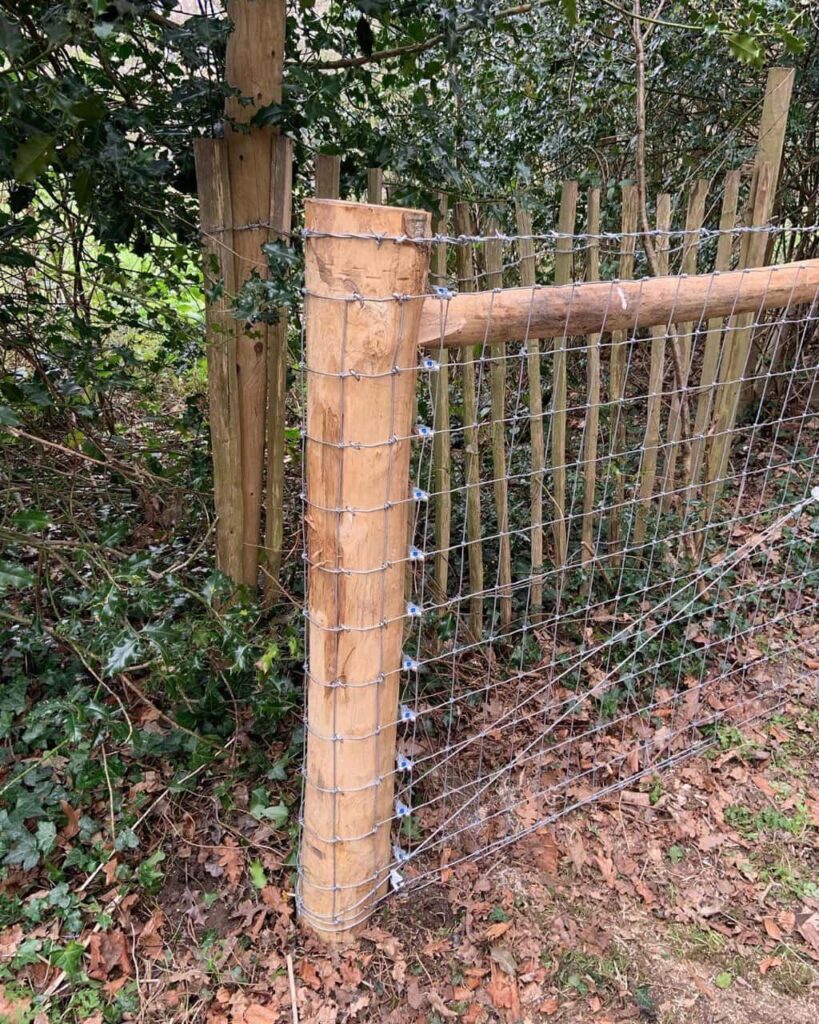
Stock fence repairs
Stock fences, also known as livestock fences or agricultural fences, are designed to contain and protect livestock animals such as cattle, horses, or sheep. These fences are subjected to constant pressure from the animals, weather conditions and other factors. As a result, stock fences may require repairs from time to time.
One of the most common issues with stock fences is broken or damaged wires. This can occur due to the animals leaning or rubbing against the fence, impact from fallen branches, or accidental damage. To repair broken or damaged wires, start by identifying the affected section. Use fencing pliers or wire cutters to remove the damaged wire. Cut a replacement wire to the appropriate length, ensuring it matches the gauge and type of the existing wires. Attach the replacement wire to the fence posts or tensioners using appropriate connectors or staples.
Posts in stock fences can become damaged or broken due to animal pressure, weather conditions, or other external factors. To repair a broken post, start by removing any remaining pieces of the broken post from the ground. Dig a new hole next to the existing hole, ensuring it is deep and wide enough to accommodate a new post. Install a new post in the hole and secure it using concrete or soil. Use wire or brackets to reattach the fence wires or panels to the new post.
Over time, sections of stock fences may sag or become loose, compromising their effectiveness in containing livestock. To address sagging or loose sections, start by inspecting the affected area. Tension the fence wires using a fence strainer or tensioning tool, pulling them taut and ensuring they are adequately secured to the fence posts or tensioners. If the sagging persists, additional posts or bracing may be required to provide extra support and maintain the integrity of the fence.
Fence posts can deteriorate over time due to rot, pests, or exposure to moisture. If you notice signs of post damage, such as rotting or weakening, it’s important to address the issue promptly. To repair a damaged or deteriorated fence post, start by removing any soil or debris around the base of the post. If the post is partially decayed, you can reinforce it by adding a post sleeve or post extender. If the post is severely damaged, it’s best to replace it entirely. Remove the old post and install a new one, ensuring it is set securely in the ground.
Regular maintenance are crucial for preventing extensive stock fence repairs. Check the fence regularly for signs of damage, such as broken wires, loose posts, or sagging sections. Repair any issues promptly to prevent further damage. Remove vegetation or debris that may accumulate along the fence line and create pressure on the wires. Additionally, consider applying a protective coating or paint to the fence posts to enhance their durability and resistance to rot.
In summary, stock fence repairs may involve fixing broken or damaged wires, repairing broken posts, addressing sagging or loose sections, and fixing damaged or deteriorated fence posts. Regular maintenance and inspections are crucial to identifying and addressing issues early on, ensuring the effectiveness and longevity of the stock fence in containing and protecting livestock animals.
If you would prefer us to take care of your stock fencing repairs then we are always on hand to handle any necessary repairs. Contact us to discuss how we can help.
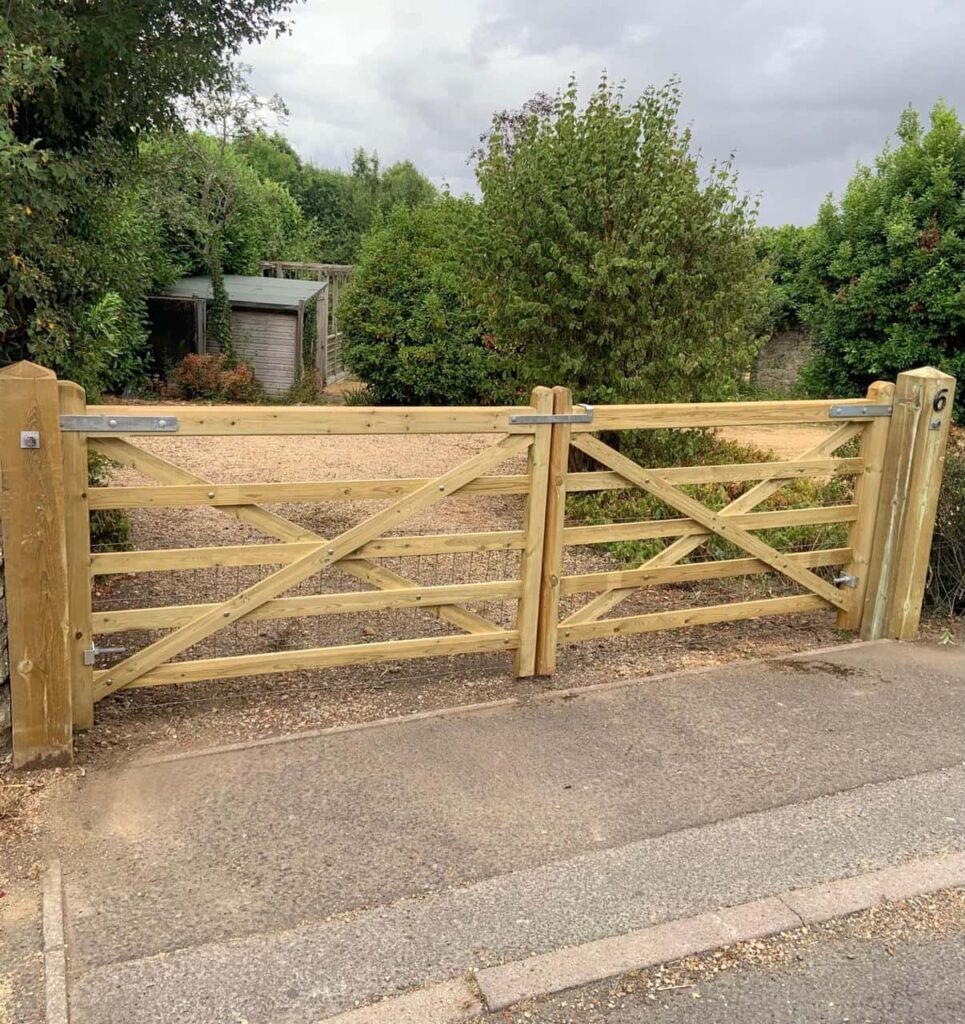
Wood garden gate and driveway gate repairs
Wooden garden gates and driveway gates are functional and aesthetically pleasing additions to any property. However, these gates may require repairs over time due to weathering, rot, or general wear and tear. Here are the options that we have available for fixing wooden gates:
Sagging is common with wooden gates, especially over time. This can occur due to the weight of the gate, gravity, or improper installation. To fix a sagging gate, start by identifying the cause of the sag. Inspect the gate hinges and posts for any loose or damaged components. Tighten any loose screws or bolts and ensure the hinges are correctly aligned. If the gate still sags, you should reinforce it by adding a diagonal brace across the back of the gate. This brace provides additional support and helps evenly distribute the gate’s weight evenly. Secure the brace to the gate and the adjacent post using screws or bolts.
Wooden gates can experience damage or breakage in various components, such as pickets, rails, or cross braces. Remove the affected part of the gate to repair damaged or broken pieces. If the damage is minor, we can apply wood glue to the broken pieces and clamp them together until the glue dries. For more extensive damage, it’s best to replace the component entirely. Measure the dimensions of the existing part and purchase a replacement that matches in terms of size and style. Attach the new component securely to the gate using screws or nails, ensuring it aligns appropriately with the existing structure.
Gate hardware, such as hinges, latches, and handles, can wear out or become rusty over time. Inspect the hardware regularly and replace any damaged or rusted components. Lubricate the hinges and moving parts with a silicone-based lubricant to ensure smooth operation. Clean the hardware periodically to remove dirt and debris affecting its functionality.
Regular maintenance is key to preventing extensive gate repairs. Keep the gate clean by regularly removing debris, leaves, or vegetation that can trap moisture and accelerate decay. Apply a protective sealant or paint to the gate every few years to enhance its resistance to moisture, UV rays, and other environmental factors. Additionally, ensure proper drainage around the gate area to prevent water from pooling and causing damage.
In summary, wood gate repairs for garden and driveway gates may involve:
- Fixing sagging gates.
- Repairing damaged or broken components.
- Addressing rot or decay.
- Maintaining gate hardware.
- Preventing future damage through regular maintenance.
By promptly addressing these repairs and performing routine upkeep, you can extend the lifespan of your wooden gates, maintain their functionality and appearance, and continue to enjoy the convenience and beauty they provide to your property. If you need gate repairs we are on hand to help.
Looking for fence repairs near me?
We can help. Here are just some of the areas we offer fencing repairs:
